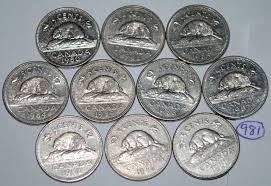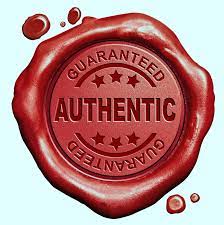Another sign of the times, and one which like too many others says “closed forever – no longer relevant”. This time it appears to be hanging on the door of Sports Illustrated.
Although there’s still a final nail to be hammered into the once-venerable and profitable magazine and its offshoots, it appears to be only a matter of time… and not much of that… before it officially is done for good. About two weeks ago, at least 100 staff members – most of the payroll – got e-mails telling them they were “terminated immediately” by their employer, something called Authentic Brands, and the few remaining people would likely be finished within six months. If the publication was already in trouble, one can’t possibly conceive of a way it will improve by firing most of its writers, photographers and editorial staff. Authentic Brands however, tweet optimistically about it being “A cost-cutting measure to initiate a transformative shift towards a streamlined business model.” Apparently the writer in charge of, ahem, corporate BS, wasn’t one of the ones let go.
A sad ending for a publication Adam Shafter of ESPN rightly notes “was an institution.” Indeed, it was the first large-circulation magazine to win the National Magazine Award for Excellence twice. Sadder still, it’s likely to be an increasingly common occurrence over the next few years as fewer people take to traditional, tactile media and do and live more and more of their lives online. The culprits for SI’s demise are many, and basically “the usual subjects” for publishers these days. Fewer sales, fewer markets to sell the publication in, indifference from phone-obsessed types, particularly younger ones. In this case, it also was predictable because younger, Gen Z-type people, have in general far less interest in the subject matter (organized sports) than their parents or grandparents. And you can add in a dash of political correctness working towards eliminating the most lucrative arm of the company for good measure.
Some would say the troubles began when Time-Life, the long-time publisher, sold Sports Illustrated to Meredith Publishing in 2018. Meredith are one of the few remaining big players in the magazine world, putting out many lifestyle titles like HGTV and Magnolia Journal as well as Good Housekeeping – titles you pick up and flip through at the grocery store checkout – but perhaps lacked the expertise to run a specialty, news-oriented (even if the news involved sports) mag. Whether or not that was the case is largely irrelevant, as within two years Meredith in turn sold it, to Authentic Brands. They in turn, for whatever reasons, licensed it out to a company called Arena Group for (according to Forbes) $15 million a year. Arena published it and presumably sent a portion of the “profits” back to the owner. Only, recently they defaulted on the payment, creating, Authentic says “substantial debt” and having that company pull the license. If you’re thinking that all sounds complicated, and wouldn’t it be simpler for a company with a knowledge of magazine publishing and an interest in the subject matter be better-suited to running it, well, what can I say? Business apparently doesn’t run that way anymore. That’s not efficient, they say.
Of course the writing’s been on the wall for Sports Illustrated for years, and more morosely, they’re far from the only vulnerable print “institution.” The internet fired the first salvo through its bows; once full scoreboards and articles about games were readily available online within hours of them taking place, there was diminished interest in waiting upto a week to get a magazine to recap it all. That accelerated with the universal adoption of smartphones by about 2012 or ’13; the same online coverage was literally at your fingertips while you sat on the john, or crashed your car while texting about the great stories you were reading. No longer did you have to go your desk and boot up a computer. It was the same kind of reason paper editions of Newsweek bit the dust in 2012.
The signs are all around us. Hop on a bus or commuter train ten years back and chances are every third or fourth person would have a magazine in front of their face… and they could pick up that glossy at the bus station, or any old convenience store, even if they didn’t have a subscription. Nowadays it’s a crowded vehicle full of people getting a crick in their neck staring down at their phones. And of course, even if they wanted to flip through SI, or People, or National Geographic or Old Guys Who Like 1954 Dodges Journal they likely wouldn’t have a chance unless they got it mailed to their home. Poynter point out that in the glory days of magazines (the late-’70s) about 35% of all mags were sold at newsstands. Nowadays, its only 3%. No wonder. Unless you live within close range of a Barnes & Noble you’ll probably not see any magazines for sale save for those handful of Meredith ones and a Life magazine special edition or two (the Grateful Dead! MASH! Betty White!) at your supermarket. What’s worse, that 3% is three percent of a much smaller pie than it used to be. Words Rated suggest between 2019-22, “total audiences for magazine companies have decreased by 38.5%” and even more shockingly, even the online audience for them has shrunk by 28.3 %. People aren’t giving up their paper copies to read it on their phones. Even when dropped onto your phone, a well-written article about a subject you care about has trouble competing against a 10-second video of a yawning cat or girl bouncing around to the latest Tik Tok trend.
There was a time when 19% of all males in the States reported being regular readers of the publication. That’s pretty close to a common language for males; a shared bit of culture that any guys who were strangers could probably have bonded over instantly. Sports Illustrated as recently as 2016 had an average circulation in the U.S. of just over three million copies per issue. At the time it was the seventh biggest-selling normal magazine in the land (twelfth if you include publications sent directly to organization members like the AARP Bulletin.) By late 2020, that had dropped to 1.6 million. But wait – it gets worse. Back in ’16, it came out weekly, as it had since appearing – Eddie Matthews of the then-Milwaukee Braves at bat on the first cover – first in 1954. But Meredith decided once every two weeks was plenty; Authentic, you guessed it, shrunk it to a once-a-month thing. Oh boy, your team just won the semi-finals game! Can’t wait to see what Sports Illustrated has to say about it…in 26 or 27 days!
Mind you, if it kept delivering well-written articles and interviews that gave real insight into the stars and the workings of their teams and leagues, there could still be an eager market for the magazine. Maybe get it back to a time when being named its “Sports Person of the Year” (Tiger Woods, Stephen Curry, Tom Brady and LeBron James the only ones to have been named such more than once, if you’re keeping track) really meant something. Unfortunately, as circulation shrank, and number of pages did likewise, and writers were lost due to attrition and disinterest. There’s a distinct feeling the quality of journalism has suffered, to the point where recently they were accused of making up false names and running some articles generated by AI rather than real, should we say “authentic” sports writers.
And of course, we haven’t even mentioned the hot potato, the elephant in the corner of the jock’s room, the Swimsuit Issue. But it should be, since for years it was the most sought-after issue of the year and the publisher’s biggest cash cow. It first came out in 1964 and by 1980 or so, SI was synonymous not only with predictions about football rankings the coming season and great photos of leaping catches by outfielders but with cute gals in skimpy swim suits. Now, there were always some naysayers and indeed, it may be a valid point to ask what girls in swimwear have to do with “Sports” but still, it is what it is. Or was. It was a hugely successful arm to the thriving body of the publication. As recently as 2005, it was reported they took in over $35 million in ads in the one edition alone. You could hire a lot of writers, not to mention photographers, for $35 mil. At the height of its popularity, it also spun off an annual TV special, later released for home viewing on VHS or DVD, and arguably the most seen calendars in the market. One source (Must Read Alaska) suggest upto 80% of the company’s total profits came from that once-a-year issue. It also made household names out of models like Elle MacPherson, Cindy Crawford, Heidi Klum…and Kathy Ireland. Other women may not have liked it that much, but I venture that the likes of MacPherson (who went on to an acting career) and Crawford (for years a red-carpet A-lister) hardly felt exploited by being photographed in nice locations in limited clothing. Kathy Ireland, for one says she’s “forever grateful” to SI for putting on the cover of the Swimsuit edition three times and that it was a big part of “the foundation of everything our company does.” What her company, Kathy Ireland Worldwide, does is license out products, have a clothing line, a record label (EE1) and other ventures that take in over three billion bucks a year. All run by her. Makes one think that there were some big brains behind those attractive bodies and the magazine gave them a springboard to rise and make the most of them.
Although the ’22 edition still sold a very good 2.5 million copies “on the street” – newsstands, Walmarts etc – on top of the paid subscribers, no one denies that its sales have plummeted and it’s hardly an item of note anymore. There are many reasons, of course. Overall there’s perhaps a sense of “been there, done that” among many and young readers may not be as attracted to it as their dads were when they were their age. But one can’t help also note, to quote Must Read Alaska again “first they went woke, then they went broke.” In the late-2010s, there was a movement complaining about the magazine. Not entirely on it existing, but rather the choice of models. They were too White. Too Female. Too slim. SI paid attention and started changing the models used. Now we have plus-sized ones in tiny swimsuits, more people of color, some men even and of course, transgendered individuals. Last year they even put 81-year old Martha Stewart – yes, that Martha Stewart – on the cover. Perhaps those who’d protested cheered, but they didn’t stampede to the stores to buy it up. Nor, one might think, did many 20 year-old frat boys even if they were curious as to whether Martha might be sharing some nice tips on decorating their dining room table for Easter.
That too, leads into perhaps the final trouble dooming SI. Fewer and fewer young people – Millennials and especially Gen Z’ s (born in the first decade of the 2000s) care much at all for sports, let alone traditional organized ones like baseball, football nor the Olympics. If they pay attention at all, it’s often to the X-sports like skateboarding, not quite in the SI wheelhouse, but mostly it seems the NBA, MLB and British football leagues have been replaced by X-boxes more than even X-games. The Score noted recently “Gen Z-ers are consuming sports less than U.S. adults” (them referring to “adults” as those over 35).” Among their findings, 33% of the young never watch live sports, and 50% say they’d never attend a live pro sporting event. The NBA is losing young fans slower than other major sports (NHL hockey has suffered the most in that category in the past decade or so) but even it no longer has the same following or cachet with the under 25s that it did a mere decade back. Put that together with the generation’s utter disinterest in conventional magazines, or it might seem, hard-copy print products of any sort and it becomes harder to see a bright future for Sports Illustrated.
So, just like that, it would seem there goes another once-proud American institution … and part of my younger years. But in its place… well, I hear there are some funny 10-second cat videos on Tik Tok.










